Ice Cave on Etna: the last "glacier" in Sicily
The Ice Cave on the NW flank of Etna (2043m.a.s.l., locally known as "Grotta del Gelo") contains the southernmost persistent major ice mass of Europe: it is about 100m long and covers the floor of a lava tube in the largest historical lava flows of Etna with a total volume of two cubic kilometers, erupted from 1614 to 1624 AD. Here we show how it appears at the end of summer, at its minimal seasonal extent, during a visit of a VolcanoDiscovery group led by Marco Fulle and Etna guide Rosario Basile. The Ice Cave is one of the most remote locations on Etna. Access is by a seven hour walk (18 km going and back) from the jeep track on the NNE Etna rift. Crampons are absolutely needed to walk safely on the very slippery ice.
|
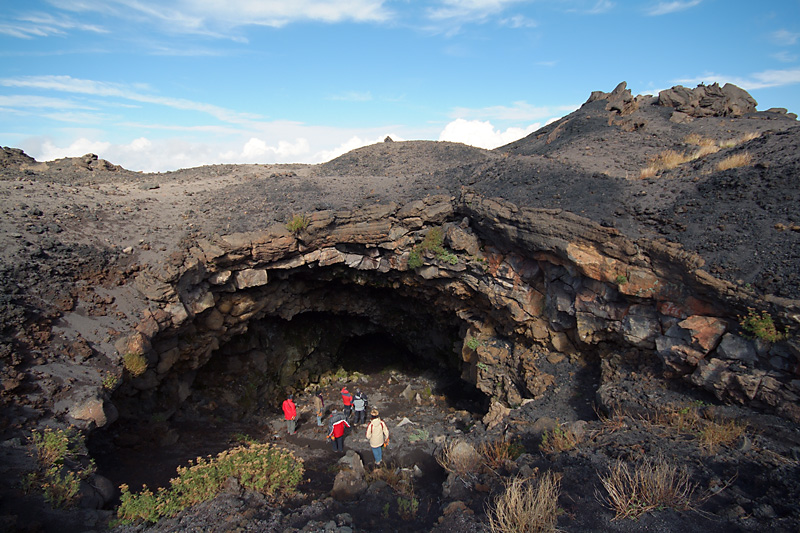 The entrance is so close to the vents of the big 1981 eruption that they are covered by a scoria layer about one meter thick. Fire meets ice on Etna! | 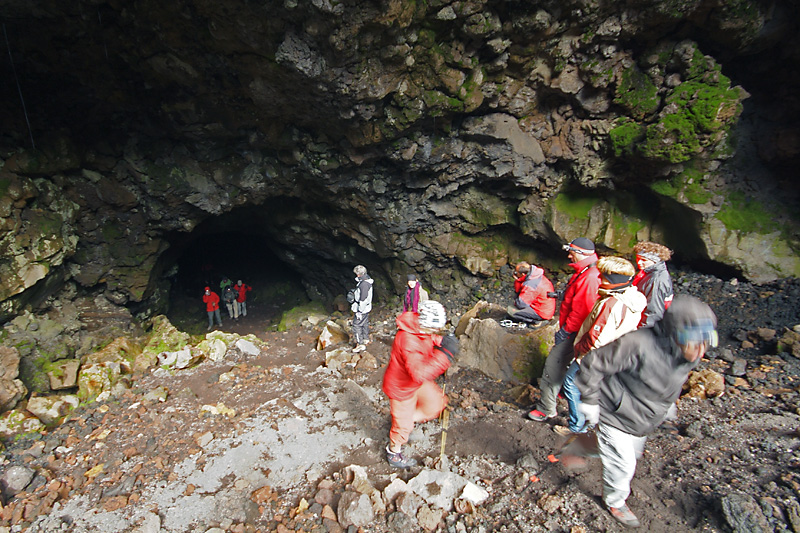 Our group has to wait that another one, guided by Etna guide Andrea Ercolani, to leaves the cave first Space is limited within the cavity... | 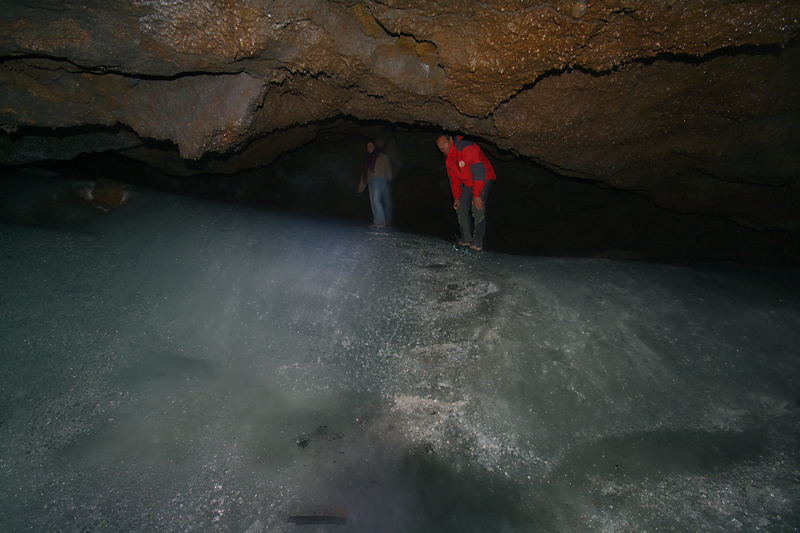 Our guide Rosario leads our group into the narrow space between the ice-covered floor and the low roof of the lava tube which is beautifully covered by lava stalactites. | 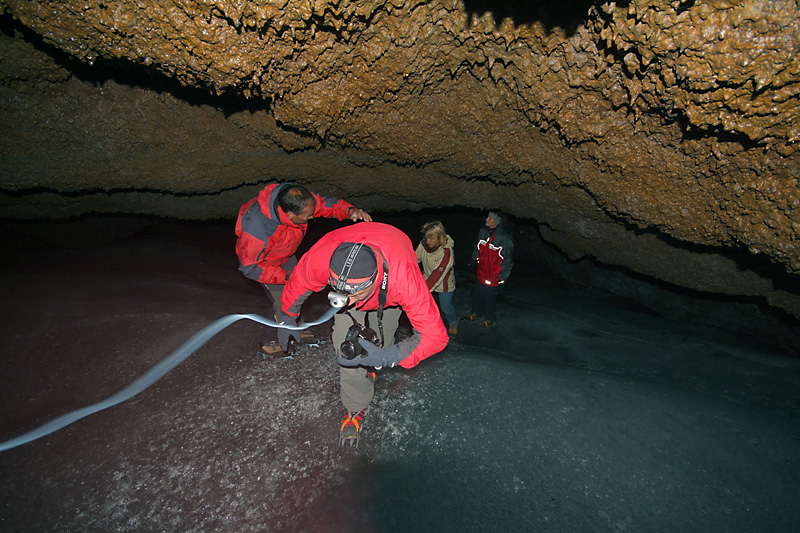 Rosario helps the group to reach the innermost part of the cave. Our headlamps shine a long way into the darkness beyond. |
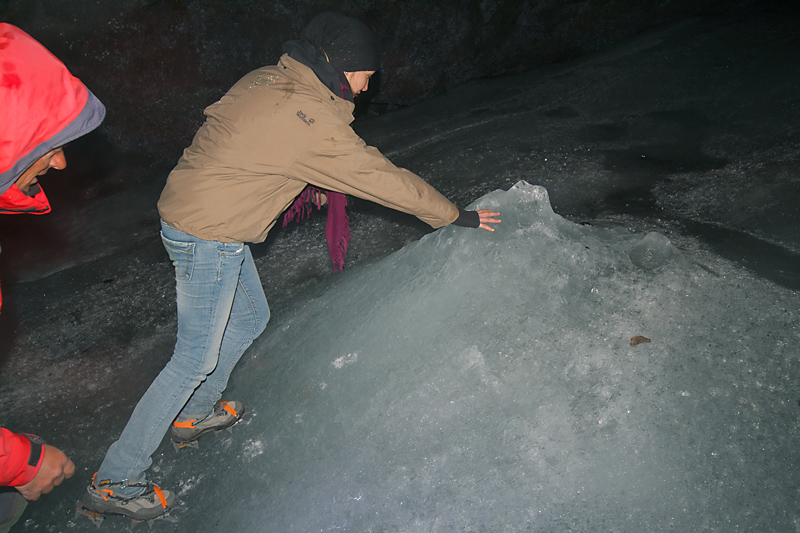 Despite the use of crampons Vanessa finds climbing the steepest parts of the "glacier" quite difficult. | 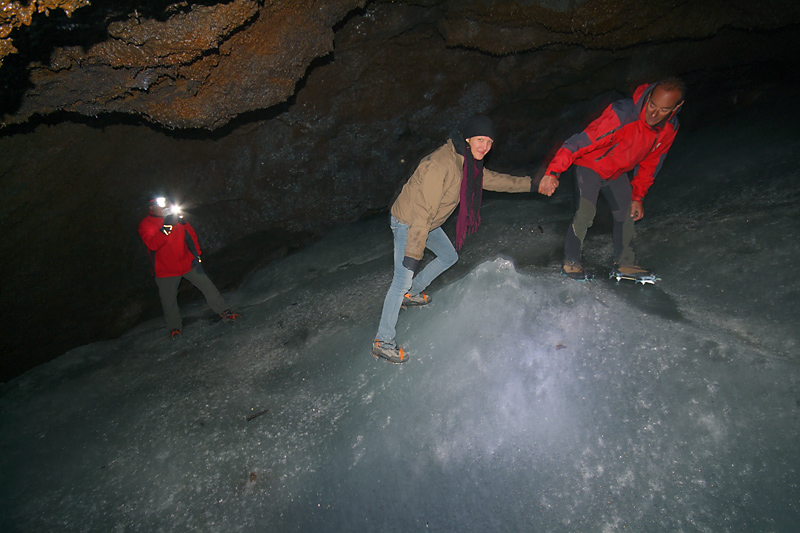 As usual, Rosario does an excellent job helping Vanessa to reach the top of the ice stalagmite. | 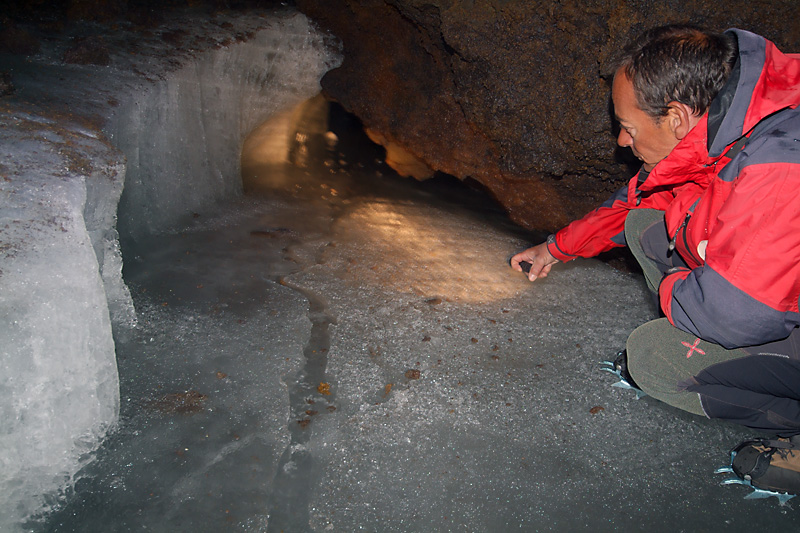 At the end of the cave we observe the flow of meltwater which disappears into the continuation of the lava tube, here obstructed by ice. | 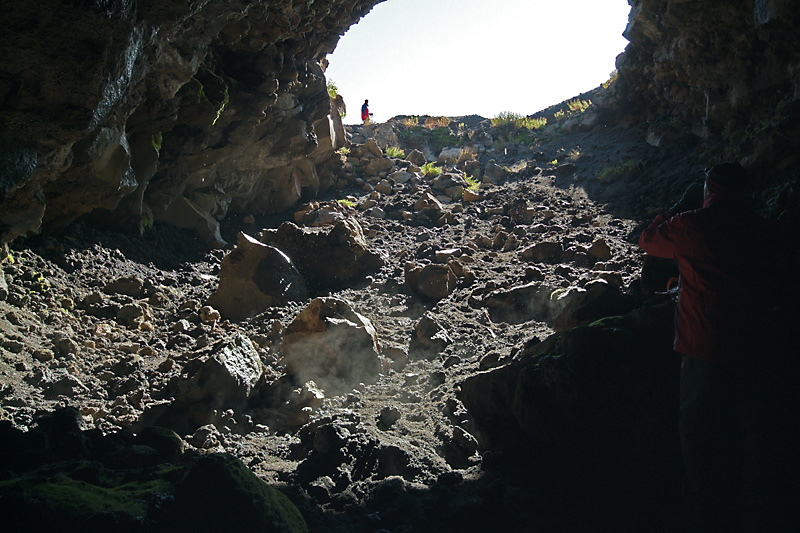 Back into sunlight! In foreground steam condenses in the cold air of the cave where a constant temperature at zero degrees Celsius is maintained. |
|
Ice masses such as this can form in caves even if the annual average air temperature is well above zero degrees Centigrade, if the cave entrance is higher than the rest of the cave. In winter cold air accumulates in the cave and is unable to flow out, due to its high density, during summer. Obviously groundwater needs to flow into the cavity in order to form an ice mass. Although locally called "glacier" it does not, scientifically, qualify as a glacier, which must be larger than one hectare and show clear signs of flowing (i.e. crevasses) under the effect of gravity.
|